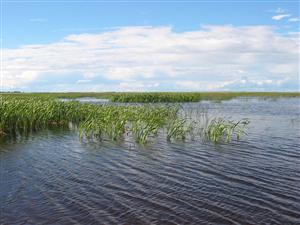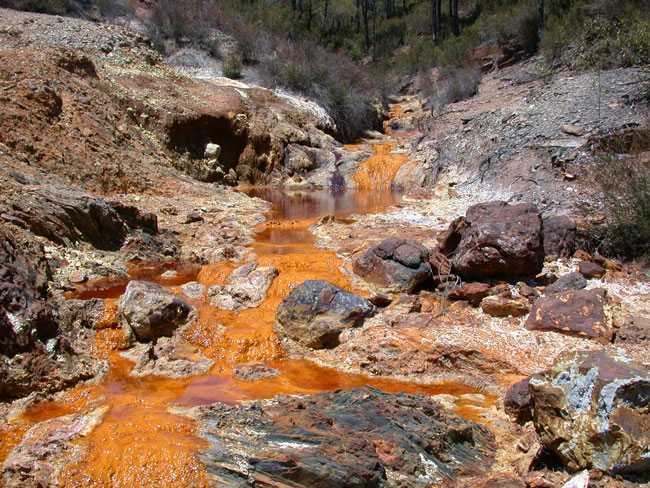|

MEP Calls for Better Groundwater Pollution Solution
Today, August 25, the Minnesota Department of Agriculture (MDA) is closing the comment period for its draft Nitrogen Fertilizer Rule, which theoretically aims to protect Minnesota’s water resources from nitrate pollution as mandated under the 1989 Groundwater Protection Act. In the 28 years since the Act was passed, agricultural nitrate pollution in Minnesota’s groundwater has only become more widespread and severe. Nitrate is among the most widespread water pollutants in the state, threatening ecosystems and drinking water, so new rules on this issue are long overdue. Unfortunately, the Nitrogen Rule as proposed would do little to reverse the problem, and leave Minnesota with fewer tools to tackle pollution in the future.
Firstly, the rule falls far short of the Groundwater Protection Act’s scope. The Act applies to all groundwater, but the MDA’s rules only apply to some groundwater, leaving significant amounts of nitrate unchecked.Secondly, under the proposed rule, the MDA can’t act to regulate groundwater contamination if farm operators adopt certain farming practices, even if those practices fail to protect our drinking water, undermining the rule’s intent and results. And the ruless rely on agricultural best management practices (BMPs) that were designed to maximize farm profit. The practices weren’t intended for use in meeting water quality standards. Even the state acknowledges that those practices won’t solve the problem.
This rule is a solution for the wrong problem, so MEP and our partners have called on the MDA to go back to the drawing board and draft a rule that would help improve Minnesota’s waters. With our coalition partners, we have sent a letter to the MDA urging them to take another look at how we can solve this issue. And we thank more than 200 action takers from around Minnesota for sending emails from our system asking Governor Dayton and the MDA to prioritize fixing this problem using sound practices. With the Governor taking input on how to improve Minnesota’s water quality by 25% by 2025, now is the perfect moment to take bold steps to ensure clean drinking water for generations of Minnesotans.

|
 |
The Energy Fair comes to St. Paul September 9-10
Join dozens of groups from the clean energy community at The Energy Fair, September 9th and 10th at Harriet Island Park in St. Paul. Admission is FREE to 80+ workshops and 60+ exhibits on sustainable living, community resilience, and clean energy. The fair will feature several speakers from MEP member groups, including keynote speaker Tara Houska of Honor the Earth, as well as Fresh Energy’s Michael Noble. There will be free rides available from Metro Transit and all-electric shuttle from Union Depot. Solar Professional Day September 8th. All access passes and information can be found at TheEnergyFair.org. We hope to see you there!
|
 |
St. Peter pursues energy efficiency project for city buildings, street lights
(From St. Peter Herald) — The city of St. Peter will upgrade lights and fix buildings to improve energy efficiency. But all of the work will be done by an outside firm, with guaranteed utility savings. The city will pay for the work through borrowing money with the savings as the repayment. Ameresco, Eden Prairie, identified the scope of the project, which totals $2.65 million. The utility and maintenance material savings will equal the cost of the project after about 19 years. “They guarantee the energy savings,” City Administrator Todd Prafke said during Monday’s City Council work session. After the project is complete, Ameresco verifies the energy conservation. >>Read More.
|
 |
 |
Minnesota River makes state’s list of infested waters
(From Montevideo American-News) — The Minnesota Department of Natural Resources recently announced that the entire Minnesota River has been added to the state’s Infested Waters List. In September of 2016, the DNR confirmed reports of zebra mussels in Lac qui Parle Lake. Recent DNR surveys of the Minnesota River have discovered adult zebra mussels attached to rocks behind the Granite Falls dam. Zebra mussel larvae, called veligers, were found at four of seven survey sites on the Minnesota River from Montevideo to New Ulm. >>Read More.
|
 |
Dayton: ‘I am here to listen to you’
(From Marshall Independent) — In some ways, Gov. Mark Dayton said, his work for clean water started in southwest Minnesota. He was reading a 2014 draft report on contaminated water in the region, and was “shocked” by what he learned. On Thursday, the topic of water quality came back to southwest Minnesota at a town hall meeting in Marshall. Dayton told a crowd of area residents that it was their chance to share concerns and ideas for cleaner water in the state. “We each have a shared responsibility,” Dayton said, to see what we can do to protect our water. “I am here to listen to you,” Dayton said. >>Read More.
|

|

photo credit: NASA |
Minnesota’s water war
(From MinnPost) — In Minnesota, proposed sulfide mining is a war over water. Foreign mining giants Glencore Xstrata (majority owner of PolyMet) and Antofagasta (sole owner of Twin Metals) are planning to use multibillion gallons of Minnesota’s waters to mine disseminated sulfide deposits containing less than 1 percent metals. When sulfide mining promoters speak of the Duluth Complex, their rhetoric is only in the geological context of metal sulfides.The Duluth Complex, a result of the Midcontinent Rift, is much more than metal sulfides. It is ancient magma, rock, and sediment. It is transformation by searing heat. The forces that formed the Duluth Complex also laid the foundation for Minnesota’s greatest treasure: its waters. >>Read More.
|
 |
Walter Mondale: We can’t afford to get the mining-vs.-land-protection equation wrong
(From Star Tribune) — The commitment of Minnesotans to protect the land and waters that are now part of our Boundary Waters Canoe Area Wilderness began in 1902. That year, Gen. C.C. Andrews, the Minnesota forestry commissioner, persuaded the U.S. Land Office to withdraw from homesteading 500,000 acres in what is now the Boundary Waters. From 1905 to 1908, the Land Office withdrew another 659,700 acres. This farsighted action paid off handsomely when President Theodore Roosevelt created the Superior National Forest in 1909. The Boundary Waters spreads across 1.1 million acres of this spectacular 3-million-acre National Forest. Now, our government has undertaken study of another sort of land withdrawal to protect the Boundary Waters. >>Read More.
|
 |
.jpg) |
Protest shuts down Line 3 construction
(From Duluth News Tribune) — Protesters identifying themselves as water protectors shut down construction for roughly two hours on a section of the Enbridge Line 3 pipeline replacement outside Superior on Monday. The event was broadcast and shared on social media, showing vehicles carrying a few dozen protesters as they arrived at around noon to what an Enbridge spokeswoman described as a 12.5-mile segment of the new line that runs along Douglas County Road W. Some protesters wore masks covering their faces and could be seen in videos locking themselves to heavy equipment. Others were overheard telling workers to “go home early,” “stop destroying our mother” and “we’re here to protect the water.” >>Read More.
|

|
 |
REVOLutioning lettuce, Medford greenhouse bringing the freshest greens
(From Owatanna People’s Press) — Do you know where you lettuce is coming from? In the summer time, chances are it is being grown right in your neck of the woods. As farm-to-table continues to grow more and more popular, people are opting for the “locally grown” section in their grocery stores more often than not. But what happens when our Minnesota summer fades into the white tundra of winter? When the environment is no longer suitable for growing, nearly all the lettuce in the United States is grown in California and Arizona. Once it is harvested, it is packaged and then placed on a truck for a cross-country road trip to our local grocery stores. >>Read More.
|

|
 |
BAM in Bemidji: Bicycling Around Minnesota makes a stop on tour
(From Bemidji Pioneer) — About 300 cyclists traveled from Walker to Bemidji on Thursday for the Bicycling Around Minnesota 2017 Tour. After the 64-mile trek, more than 200 of them set up camp at the Lake Bemidji waterfront and others are staying in hotels for the 12th annual event. The cyclists will travel to Park Rapids Friday, from there to Staples on Saturday and end back in Walker on Sunday. While in Bemidji, they’ll visit the Beltrami County History Center, the Headwaters Science Center, Bemidji Brewing and also have a concert at the waterfront. Bicycling Around Minnesota also donated a bike rack to the city of Bemidji. “Cycling in North Central Minnesota is one of the most popular tours we do,” said BAM Tour Director Mary Derks in a press release. >>Read More.
|
Weekly Outdoor Trivia – Answers Below Job Postings!
|
 |
1. Which state park is Minnesota’s largest?
2. What state park, known for its namesake lake, is our oldest and second-largest?
3. What mammal forms part of the Ojibwe name for that lake?
|
Upcoming Environmental Events
-
Fresh Energy at the Minnesota State Fair, August 24-September 4
Minnesota State Fairgrounds, Falcon Heights
Hosted by Fresh Energy
-
Wild and Scenic Film Festival: Minneapolis, August 25
The Ritz Theater, Minneapolis
Hosted by Friends of the Boundary Waters Wilderness
-
Healthy Local Food Exhibit at the Minnesota State Fair, August 25-September 6
Minnesota State Fairgrounds, Falcon Heights
Hosted by Renewing the Countryside
-
Plant native species and tend the demonstration prairie at Ole Olson Park, August 30
Ole Olson Park, Minneapolis
Hosted by Friends of the Mississippi River
-
The Energy Fair, September 9
Harriet Island Park, St. Paul
Hosted by Midwest Renewable Energy Association, featuring many MEP member groups
Jobs and Volunteer Opportunities
Membership and Individual Giving Associate | Land Stewardship Project – Apply by September 1
Director of Public Affairs | Northeast Minnesotans for Wilderness
Executive Director, Southwest | Regional Sustainable Development Partnership University of Minnesota Extension
State Policy Community Organizer | Land Stewardship Project
State Director | Environment Minnesota
See all job postings
Trivia Answers: 1) St. Croix State Park. 2) Itasca State Park. 3) Elk
|
|
|